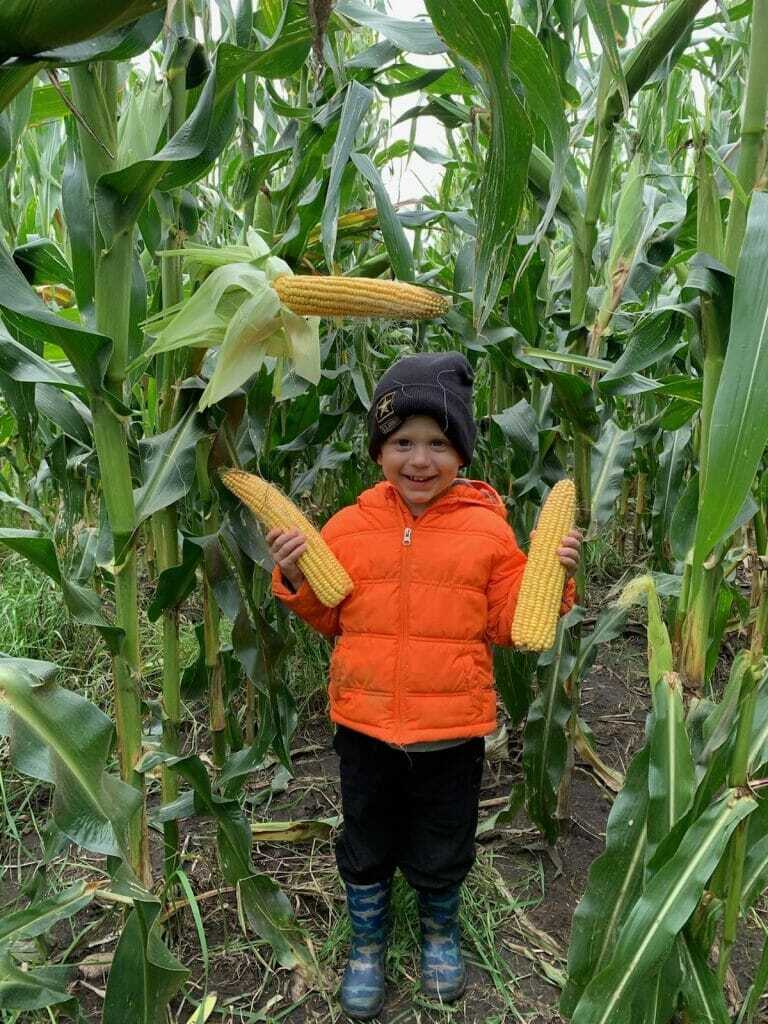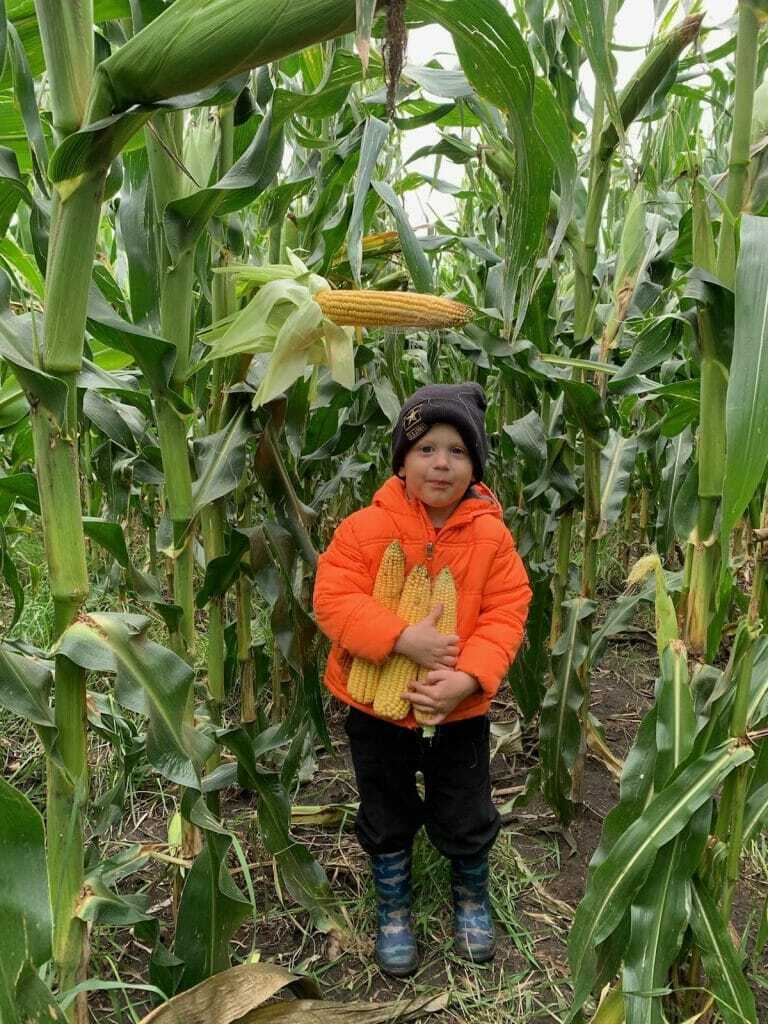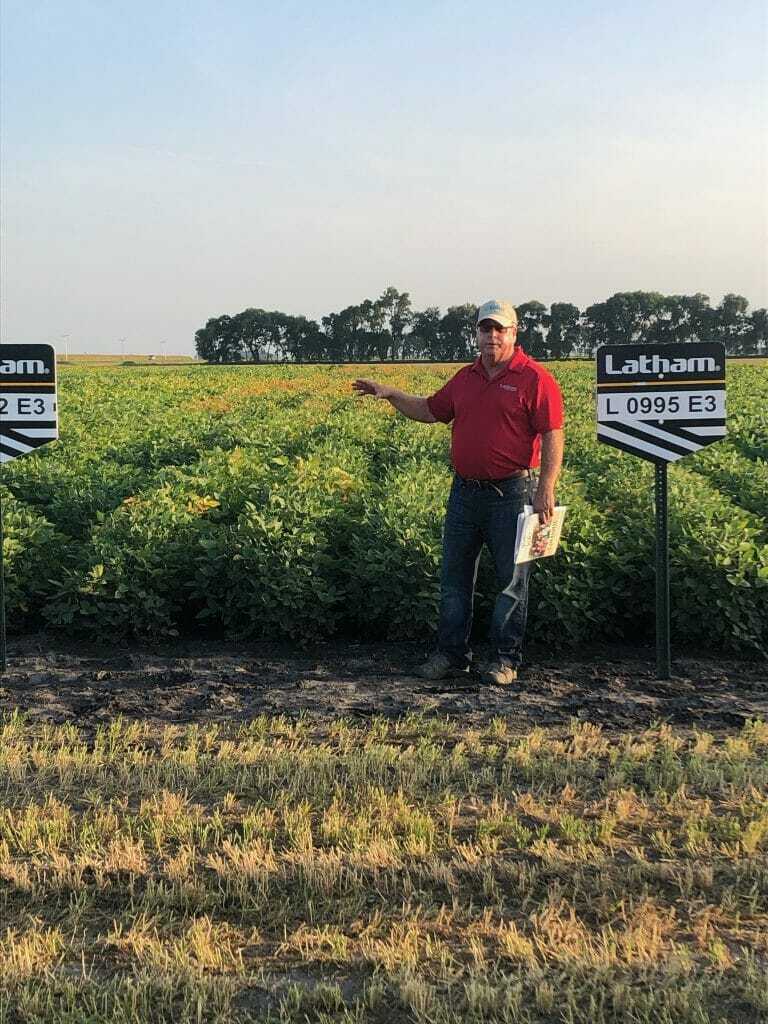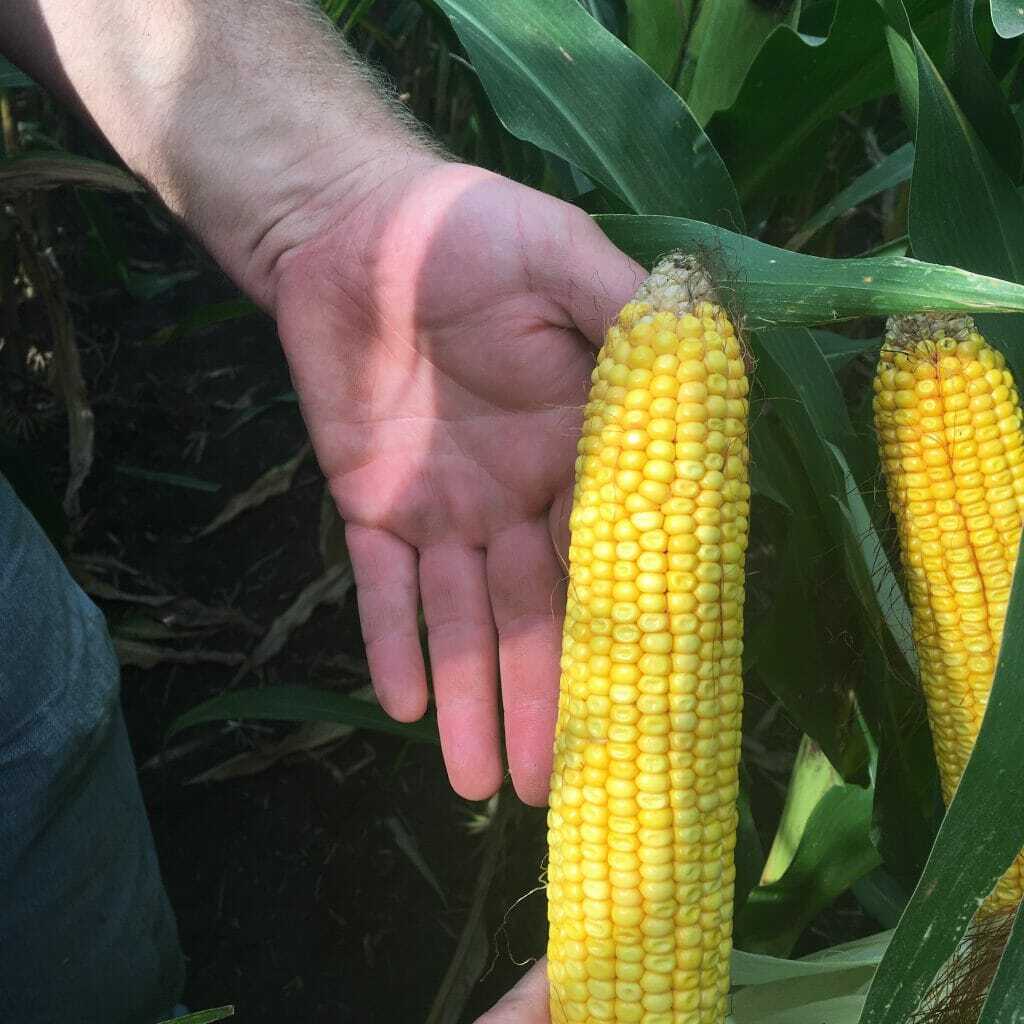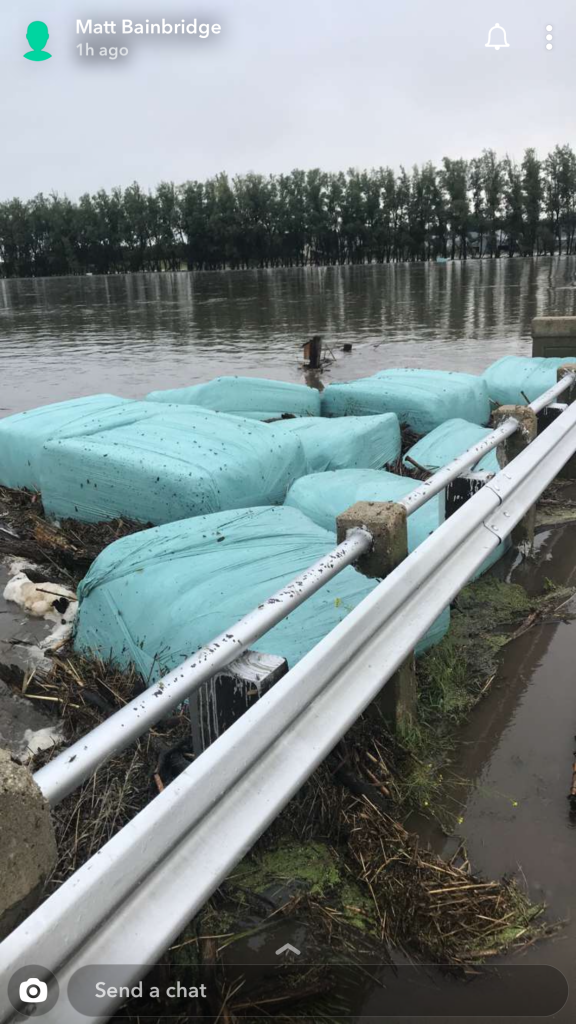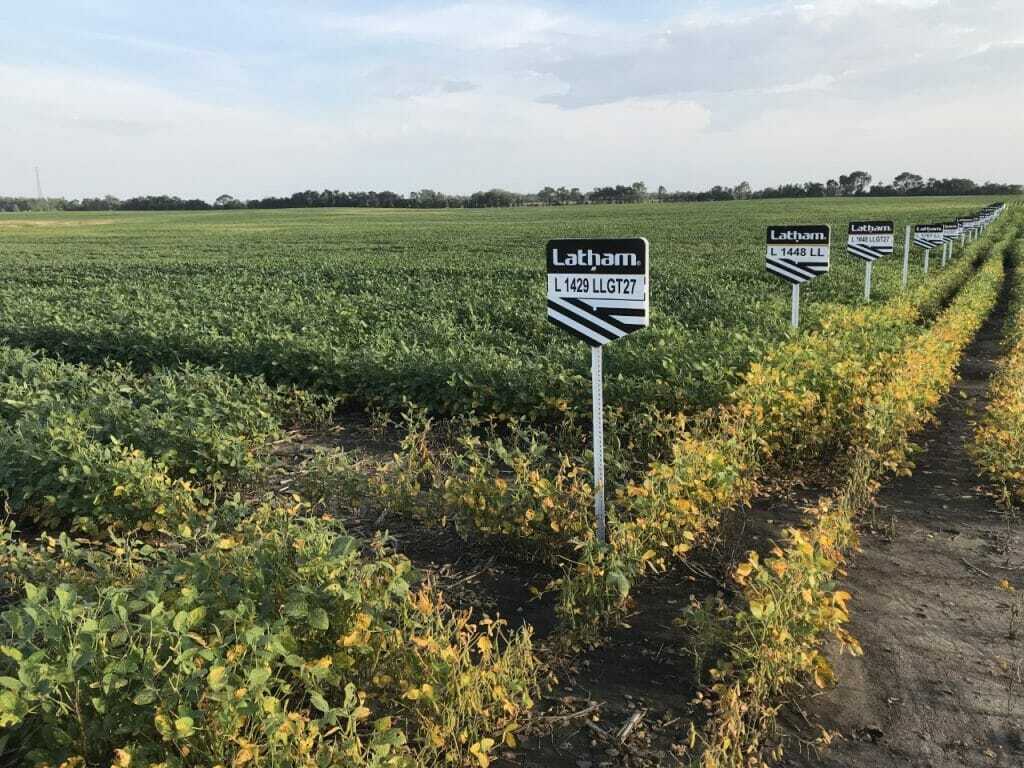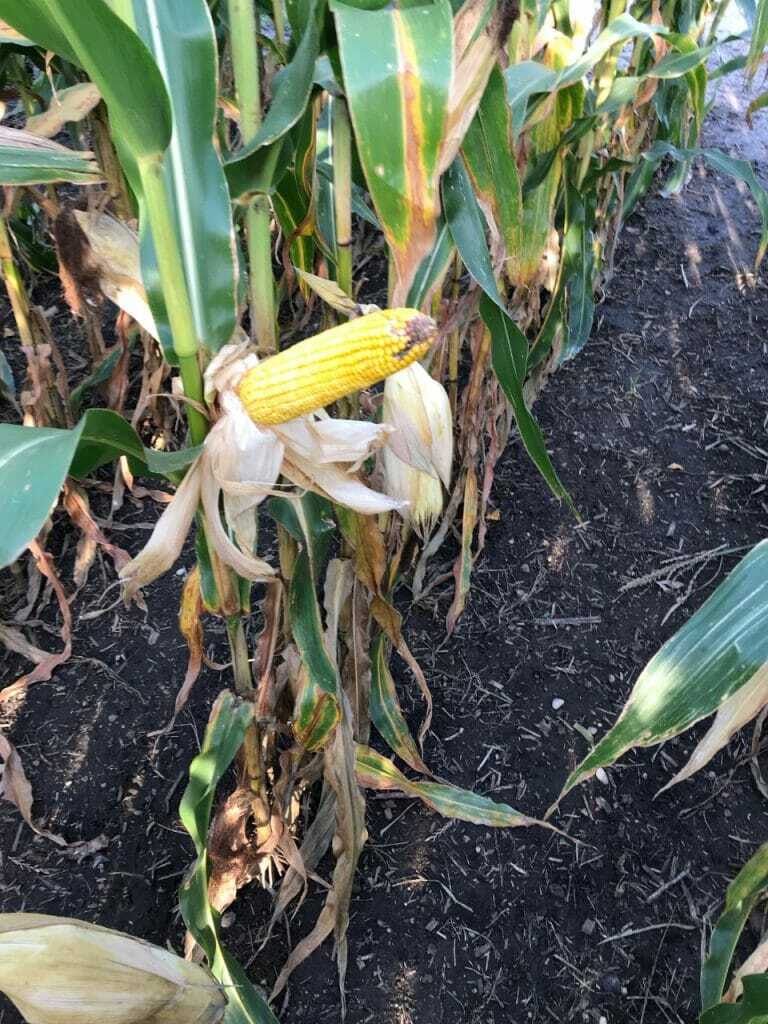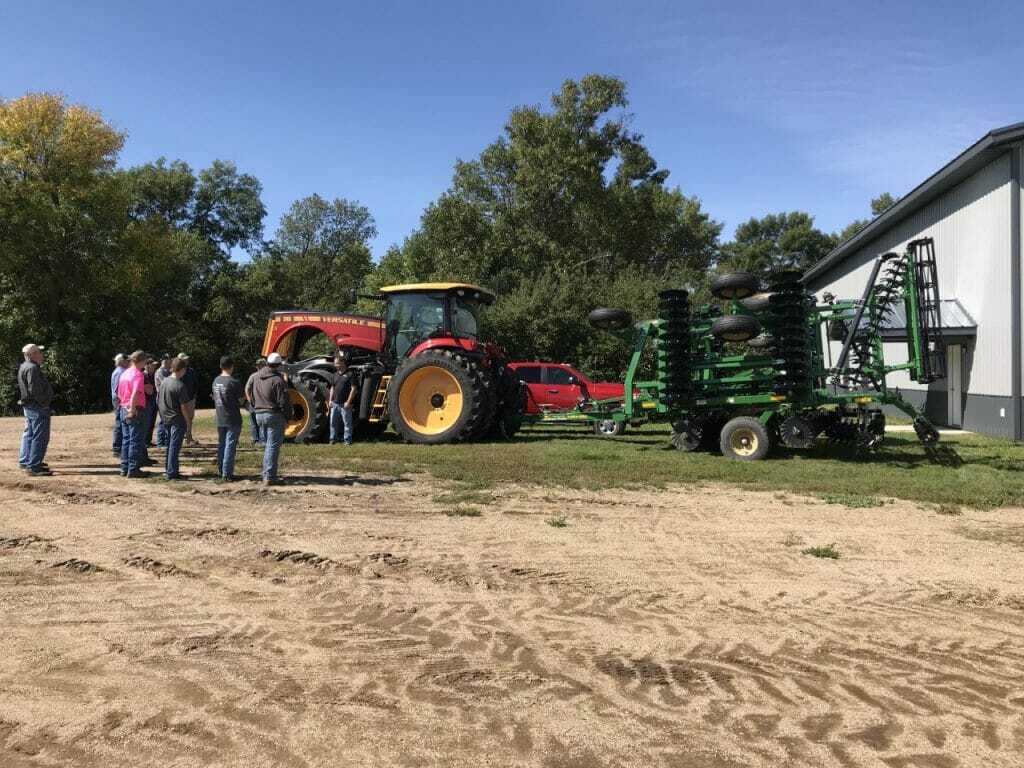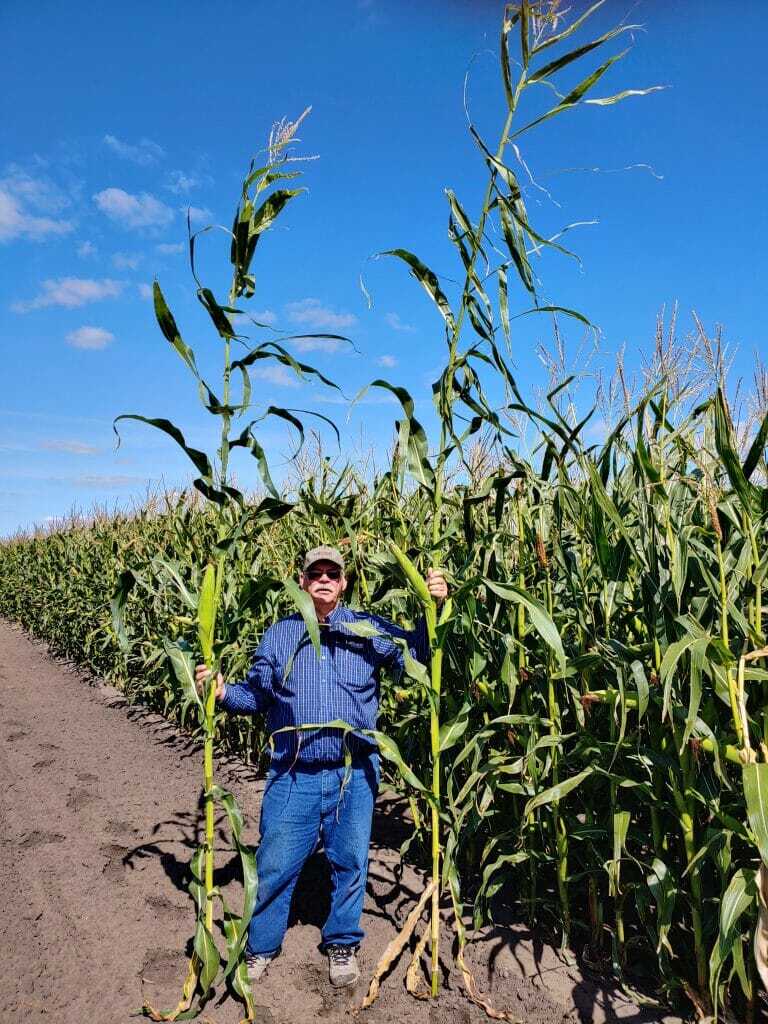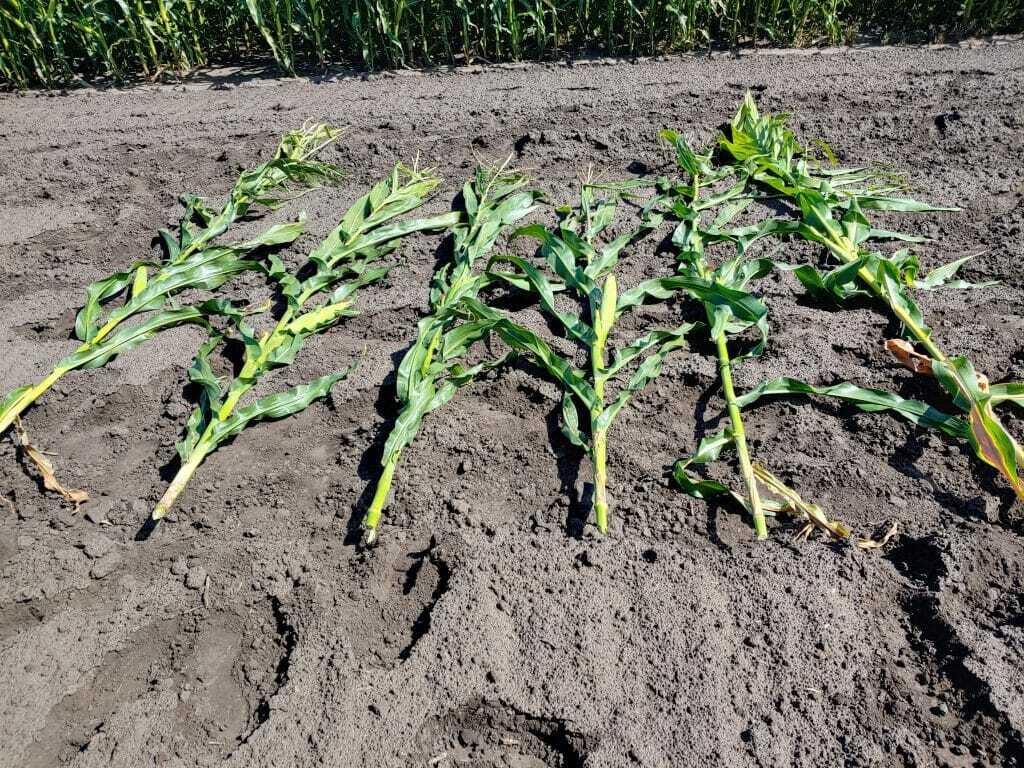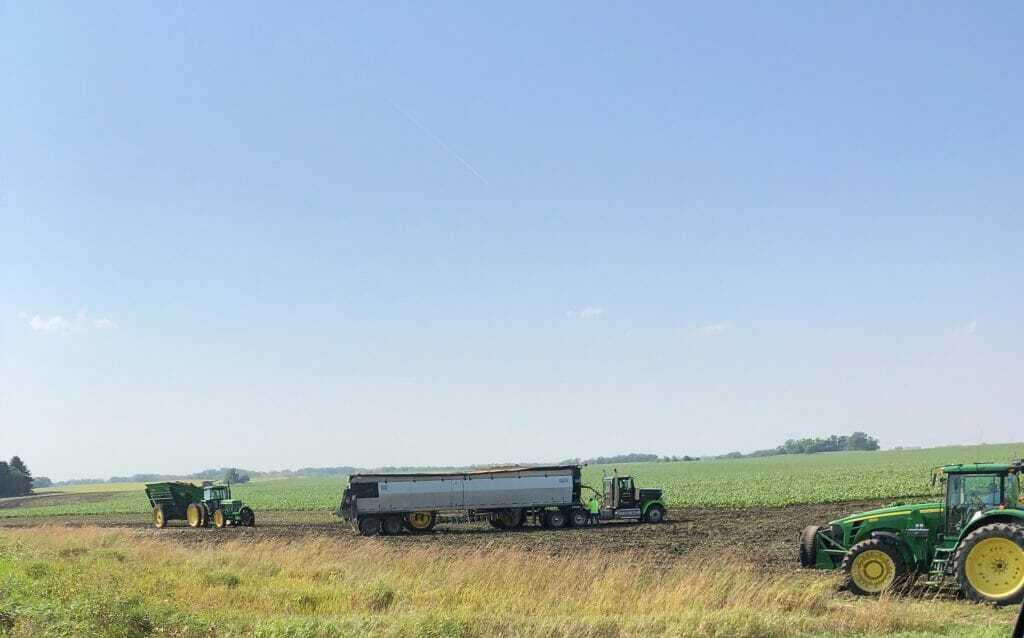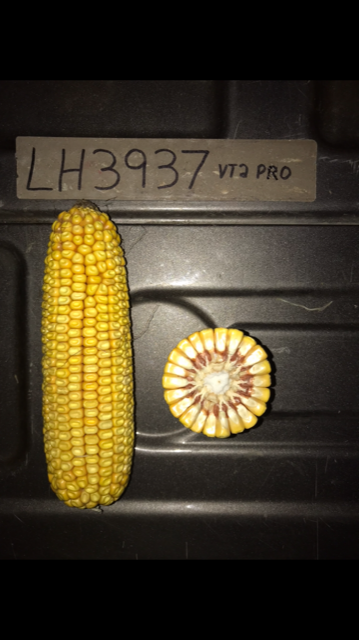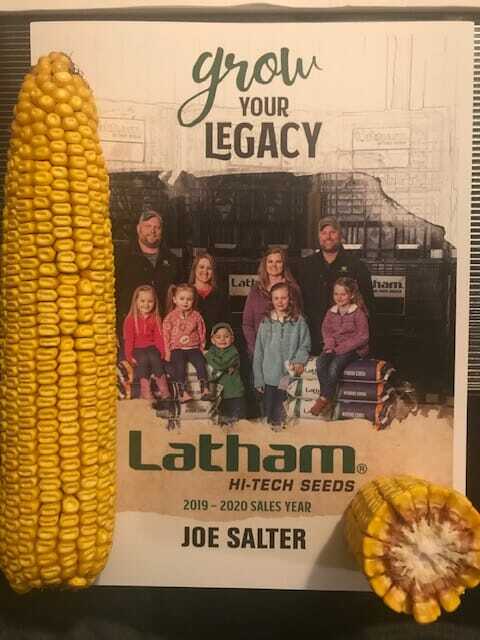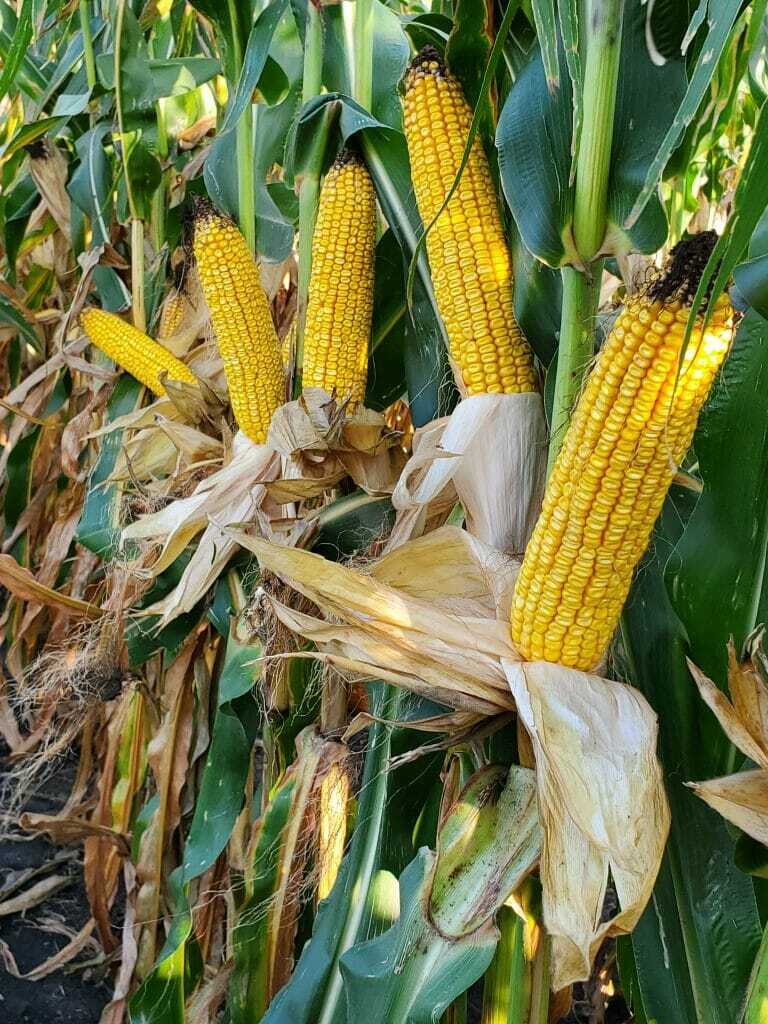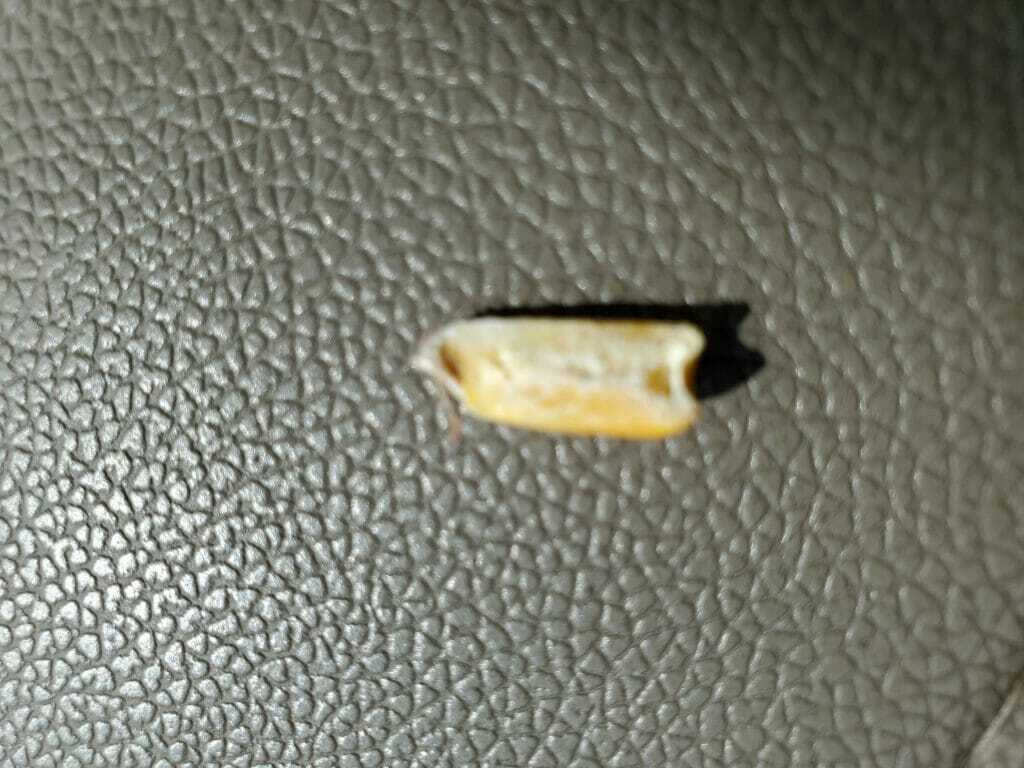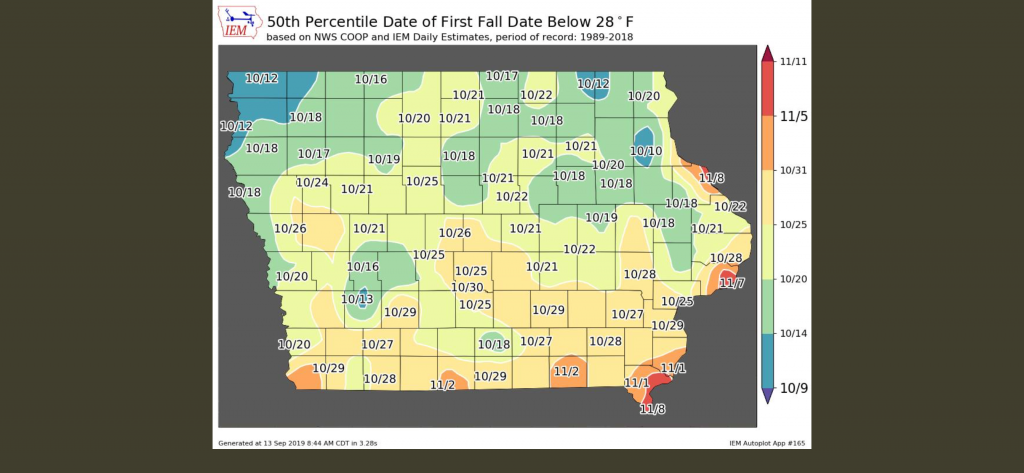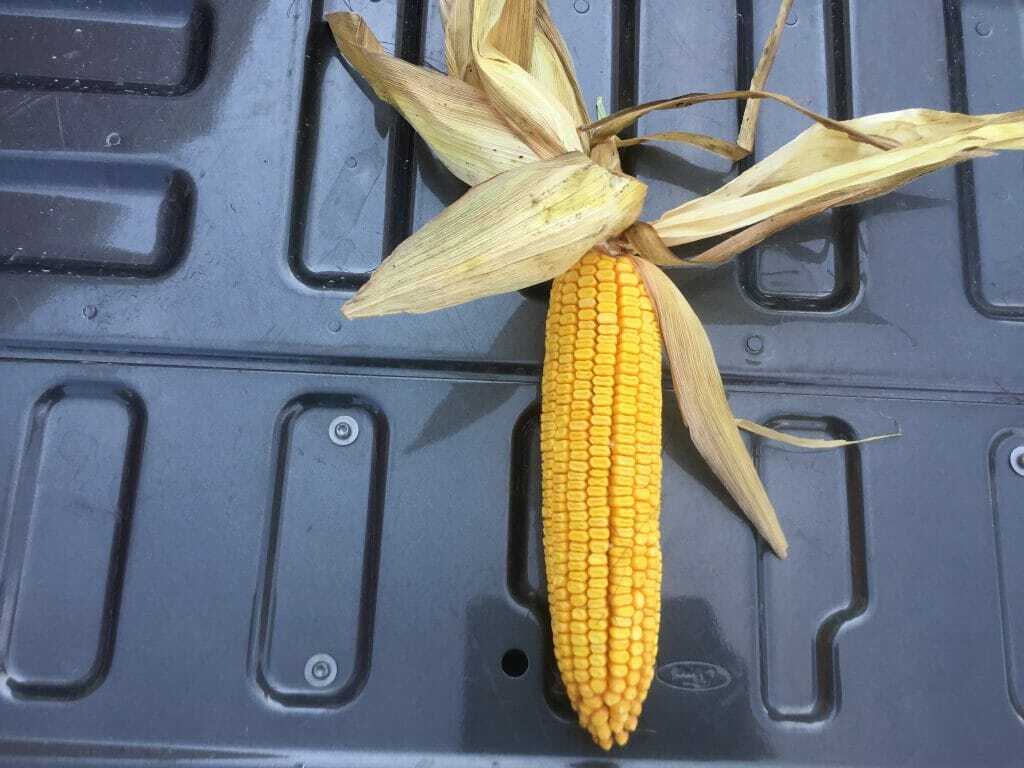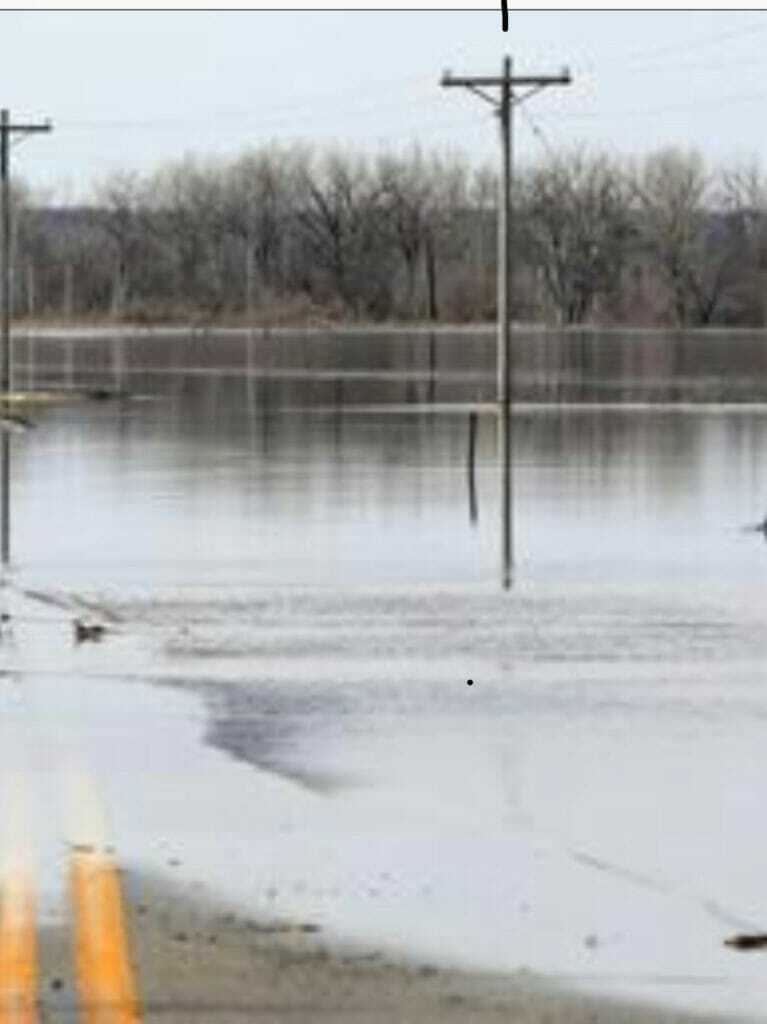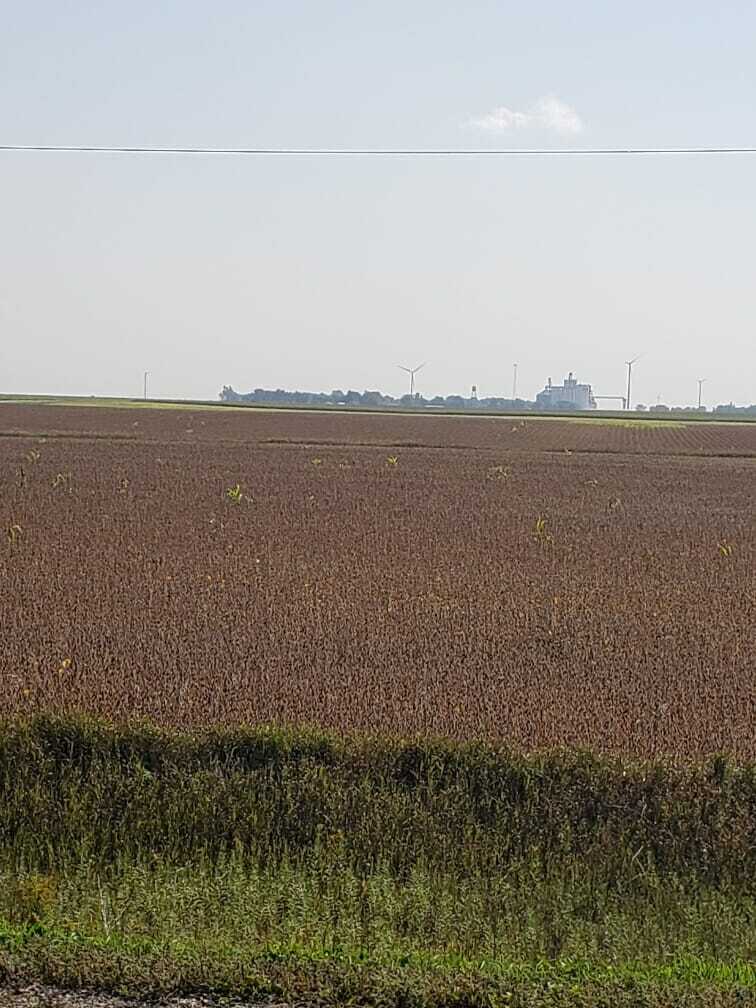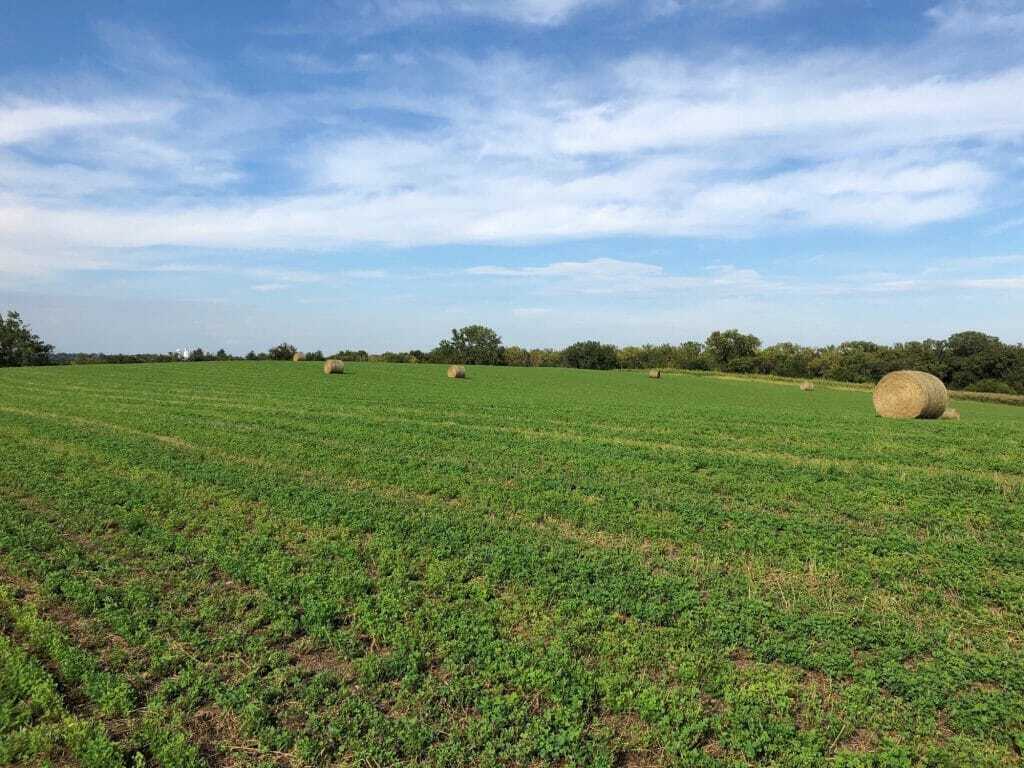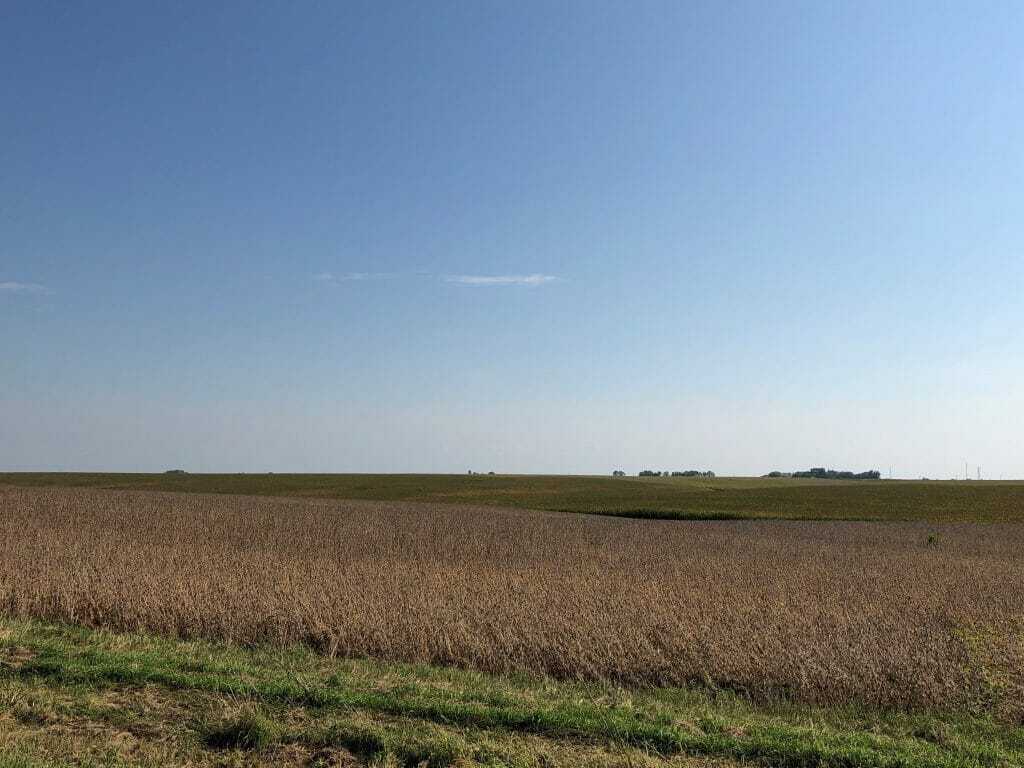Northwest North Dakota
Brian McNamee
This little farmer is showing off some fantastic ears of LH 4240 Conventional at Triple B Seed at Fredonia, ND. We experimented a bit this year after Latham Forage Manager Corey Catt suggested using multiple hybrids in our silage fields. This was a combo of 4240/4940. The objective was to utilize 4240 for its ear size and high starch levels, and complement it with LH 4940 conv/leafy for its pure plant mass and tremendous tonnage.
All of us involved believe this will not only be the highest tonnage per acre we have ever achieved on this farm. The quality of this silage will be at top levels, as well. We will be testing these fields this week, and I can’t wait to see the results!
Southeast North Dakota
Gary Geske
We enjoyed a nice, warm evening for a plot tour. Latham’s Regional Sales Manager Ken Highness talks about Latham® E3TM Soybeans at C-W Valley Co-op near Comstock, MN.
We’re finally accumulating some important heat units to help this year’s crop mature. During the last three days, we have received over 65 growing degree units (GDUs). That’s more GDUs than the previous 10 days combined! Soybeans are really ripening fast with this heat, so harvest of some early planted soybeans may only be a week away.
Southeast South Dakota
Ramie Coughlin
If anyone was curious as to whether silage bales float, the answer is yes. Yes, they do. Last week South Dakota receive torrential rain, which caused major flooding across most of the southeast corner of the state. With 12 + inches of rain falling in less than 24 hours, combined with already very saturated ground, many communities and roadways were flooded. Many schools had to close. Interstate 90, as well as Highways 38 and 34, are just a few of the roads that were closed. Most main roads have reopened, but there are still many county and township roads in repair as gravel and culverts washed away. This is just one more hurdle we will have to leap over this fall. On the bright side of things, we have corn! Fields look rough and the ground is muddy, but we are finding many large, full ears in the corn fields. The last few days have brought highs in the upper 80s to lower 90s. We need this weather to stick around, so this crop can finish. Fingers crossed.
Northeast South Dakota
James Keltgen
Wet continues to be the theme as another half inch of rain fell near Watertown, SD. Fortunately, the temperatures have been above normal this past week! Since May 12, we have accumulated 2,169 growing degree units (GDU). We’re still 143 GDU’s behind average, which affects the crop’s maturity. A hybrid with a relative maturity (RM) of 95 days needs approximately 2,350 GDU’s to reach black layer. If every day here on out was 80 degrees, black layer could be achieved in about two weeks!
Soybeans are turning yellow with the warmer temperatures. This heat is helping push along crop development and dry out waterlogged fields. We will need dry conditions to start harvest. I expect will begin in about two weeks.
This Latham SuperStrip™ is showings signs of fall! SuperStrips play an important part in Latham’s research program, which helps us select the best products for each geography we serve.
LH 3937 VT2 PRO looks stellar! With the wet growing season, however, nitrogen deficiency is present everywhere across Northeast South Dakota.
It’s field day season! Attendees are enjoying an equipment demo at Mork Farms’ plot tour.
Northern Minnesota
Ken Highness
Pictured here is Gary Geske, comparing experimental silage in Latham Seeds’ research plot in Emerado, ND. It looks like there’s big tonnage in our very near feature!
Southern Minnesota
Justin Prokosch
Farmers are getting very busy in some parts of the territory as sugar beet harvest has begun near the Renville plant. Edible bean growers are also planning to harvest by the end of the week. With the extensive rains we received last week, it may be a challenge for some to harvest some early sugar beets. This farmer is using dump carts instead of driving the trucks through the fields.
Northern Wisconsin
Joe Salter
Silage harvest is starting… finally. Soybeans are really starting to turn. We received several inches of rain during the last week, but the past few days have been really warm and very helpful in progressing our crop.
I had the chance to walk some fields last week. Pictured below are my two favorite hybrids for our area, LH 3937 VT2 PRO and LH 4937 VT2 PRO. Both of these hybrids look really good this year! I really like LH 3937 north of Highway 8 west of Barron and north and south of Highway 29 east of Cadott. I really like LH 4937 south and west of Chippewa Falls. Remember, you reduce some risk when you plant a package of products. Talk to your Latham® dealer about placing three or four hybrids, field-by-field.
North Central Iowa
Cory Greiman
This field of Latham® LH 4795 VT2 PRO RIB was planted May 12 near Klemme, Iowa. It’s really looking good and is starting to black layer.
Northwest Iowa
Jeremy Joynt
When will we get our first frost in Northwest Iowa? If you’re thinking about cover crop growth or a maturity risk, use the image below provide by the Iowa Environmental Mesonet (IEM). This map shows the date when 50% of the previous years (1989-2018) experienced temperatures below 28 degrees Fahrenheit.
The actual forecast is keeping temperatures very mild for this time of year with no present hint that such cold temperatures are possible in the near future. But we all know that our weather can change without much warning!
Northeast Iowa
Craig Haaland
Latham’s LH 5847 VT2 PRO RIB is one to keep your eye on! I pulled this ear from a field in Butler County where this hybrid looks fantastic. It has a very sturdy stalk with good late-season intactness. This hybrid has a great overall disease package, and it responds to high management. Last week from 2 to 5 inches of rain fell in our area. Fortunately, we got some sunshine and lots of heat so far this week. Soybean fields are really turning now, and some silage is getting chopped now.
Eastern Iowa
Jerry Broders
We continue to march toward harvest in Eastern Iowa as soybeans are turning. Pictured here are Latham® Hi‑Tech Soybeans L 2682 R2X and L 2886 R2X, which were planted May 27. Both varieties would be a great choice for your acres. Unfortunately, a storm rolled through Saturday night into Sunday morning. Significant wind damage is evident in corn fields across northern Clinton County.
Western Iowa
Larry Krapfl
Historic flooding wreaked havoc to our area in March. Flooded ground followed by heavy spring rains made it hard for farmers to get seeds in the ground. We didn’t even get a chance to catch our breath before a second flood caused replanting or prevented them from planting. Now we’re preparing for a third round of flooding after heavy rains fell last week in the north. It’s hard to think about fall harvest or anything else when communities are being evacuated and roads are closing. Please keep residents, including farmers, along the Missouri River in your thoughts and prayers.
West North Central Iowa
Bart Peterson
This picture was taken near Palmer, Iowa, where it looks like harvest will begin the first of next week. Most soybeans in this area still need another two or three weeks before they’ll be ready.
Central Iowa
Aaron Steenhoek
Signs and smells of fall are appearing everywhere! The last of the hay is being made for the year and harvest is just around the corner.

